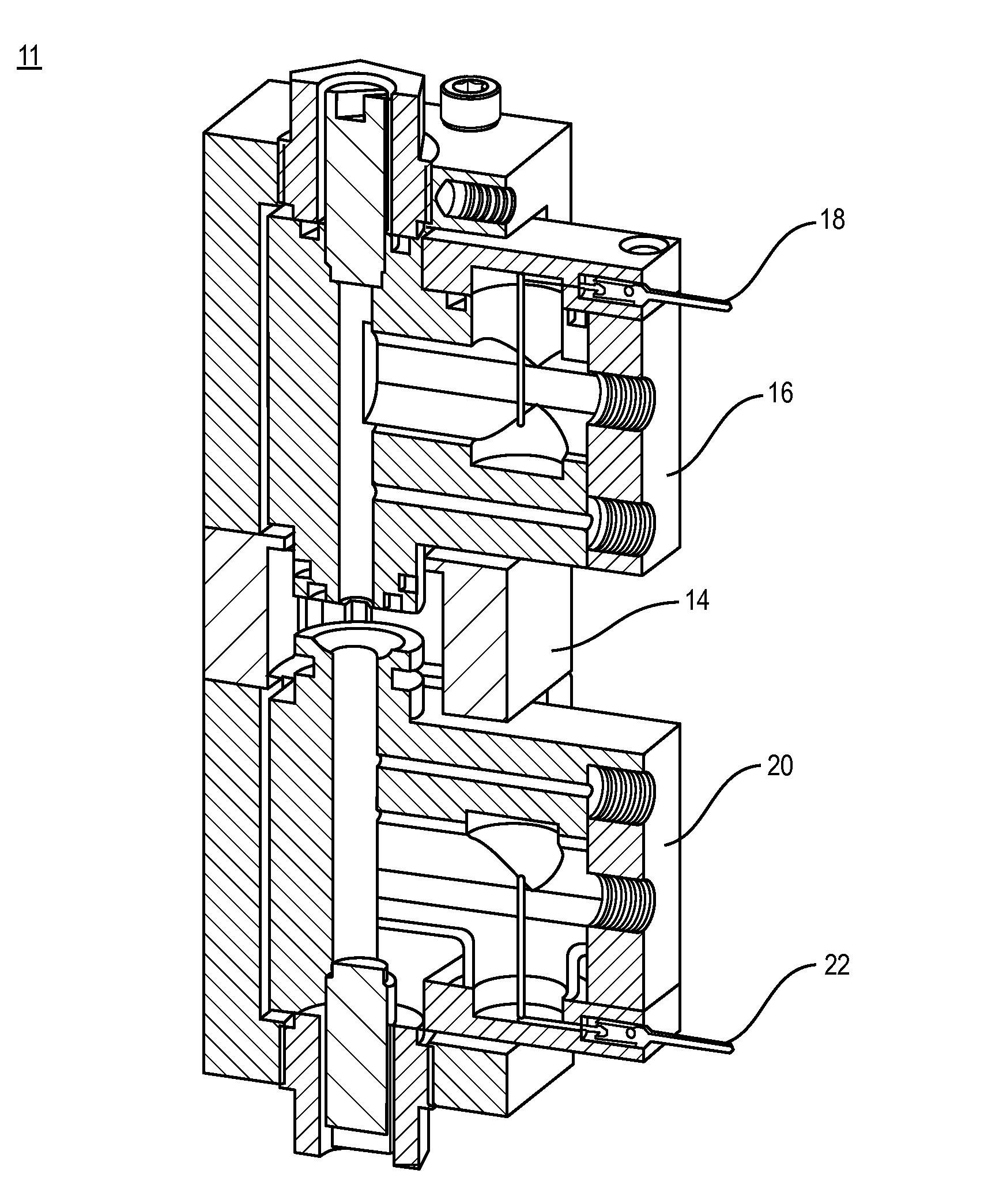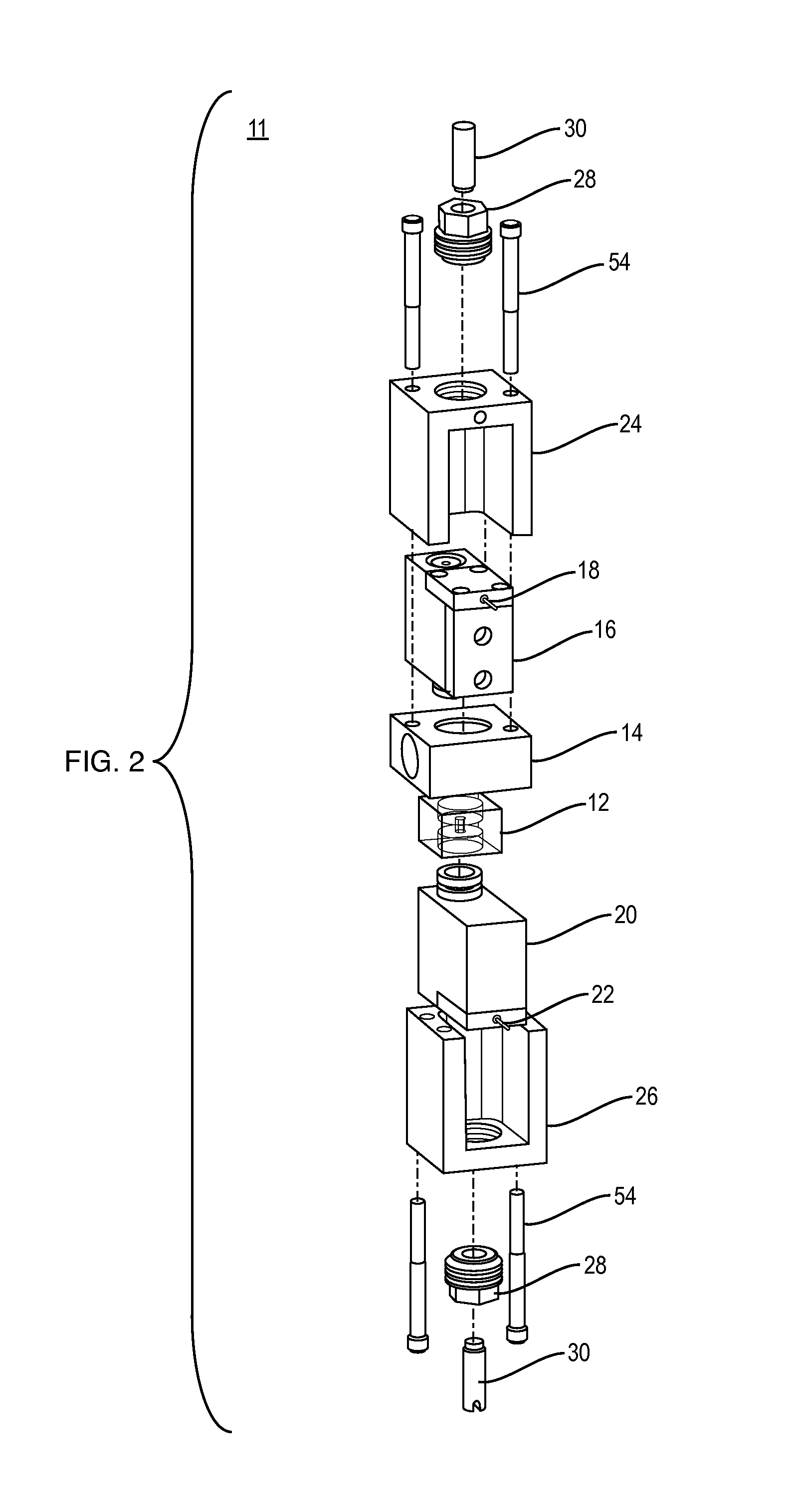Membrane confined electrophoresis
- Summary
- Abstract
- Description
- Claims
- Application Information
AI Technical Summary
Benefits of technology
Problems solved by technology
Method used
Image
Examples
Embodiment Construction
[0023]The present invention features a membrane confined electrophoresis (MCE) system 10, including a cuvette assembly 11, FIGS. 1, 2 and 5. The cuvette assembly 11 uses first principle techniques to measure effective charge (z*) and electrophoretic mobility (μ) of macromolecules, such as proteins for example, in solution. The cuvette assembly 11 provides fast and accurate information on molecule charges. The effective charge of the molecules is measured without comparison to standards and without the need for secondary parameter determination.
[0024]The present invention features first principle measurement techniques, direct determination of z*, and real time electrophoretic mobility distribution, g(μ). The method can be accomplished using a low sample volume (approx. 20 uL) and a low sample concentration (approx. 100 μg / mL) over a wide temperature range (10-40±0.1° C.) using a wide range of solvents and pH.
[0025]The cuvette assembly 11, FIG. 2, features a quartz cuvette 12 encased...
PUM
 Login to View More
Login to View More Abstract
Description
Claims
Application Information
 Login to View More
Login to View More - R&D
- Intellectual Property
- Life Sciences
- Materials
- Tech Scout
- Unparalleled Data Quality
- Higher Quality Content
- 60% Fewer Hallucinations
Browse by: Latest US Patents, China's latest patents, Technical Efficacy Thesaurus, Application Domain, Technology Topic, Popular Technical Reports.
© 2025 PatSnap. All rights reserved.Legal|Privacy policy|Modern Slavery Act Transparency Statement|Sitemap|About US| Contact US: help@patsnap.com



